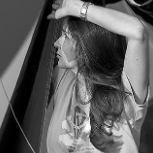CUBAN PETE
-
Ostatnio w Warsztacie
-
bazyl_prost 439
antarktyczna mgła u mnie, też fajnie
0
-
-
Najczęściej komentowane w ostatnich 7 dniach
-
- 58 odpowiedzi
- 1 040 wyświetleń
-
- 47 odpowiedzi
- 920 wyświetleń
-
- 33 odpowiedzi
- 592 wyświetleń
-
- 32 odpowiedzi
- 658 wyświetleń
-
- 30 odpowiedzi
- 676 wyświetleń
-











Rekomendowane odpowiedzi
Jeśli chcesz dodać odpowiedź, zaloguj się lub zarejestruj nowe konto
Jedynie zarejestrowani użytkownicy mogą komentować zawartość tej strony.
Zarejestruj nowe konto
Załóż nowe konto. To bardzo proste!
Zarejestruj sięZaloguj się
Posiadasz już konto? Zaloguj się poniżej.
Zaloguj się